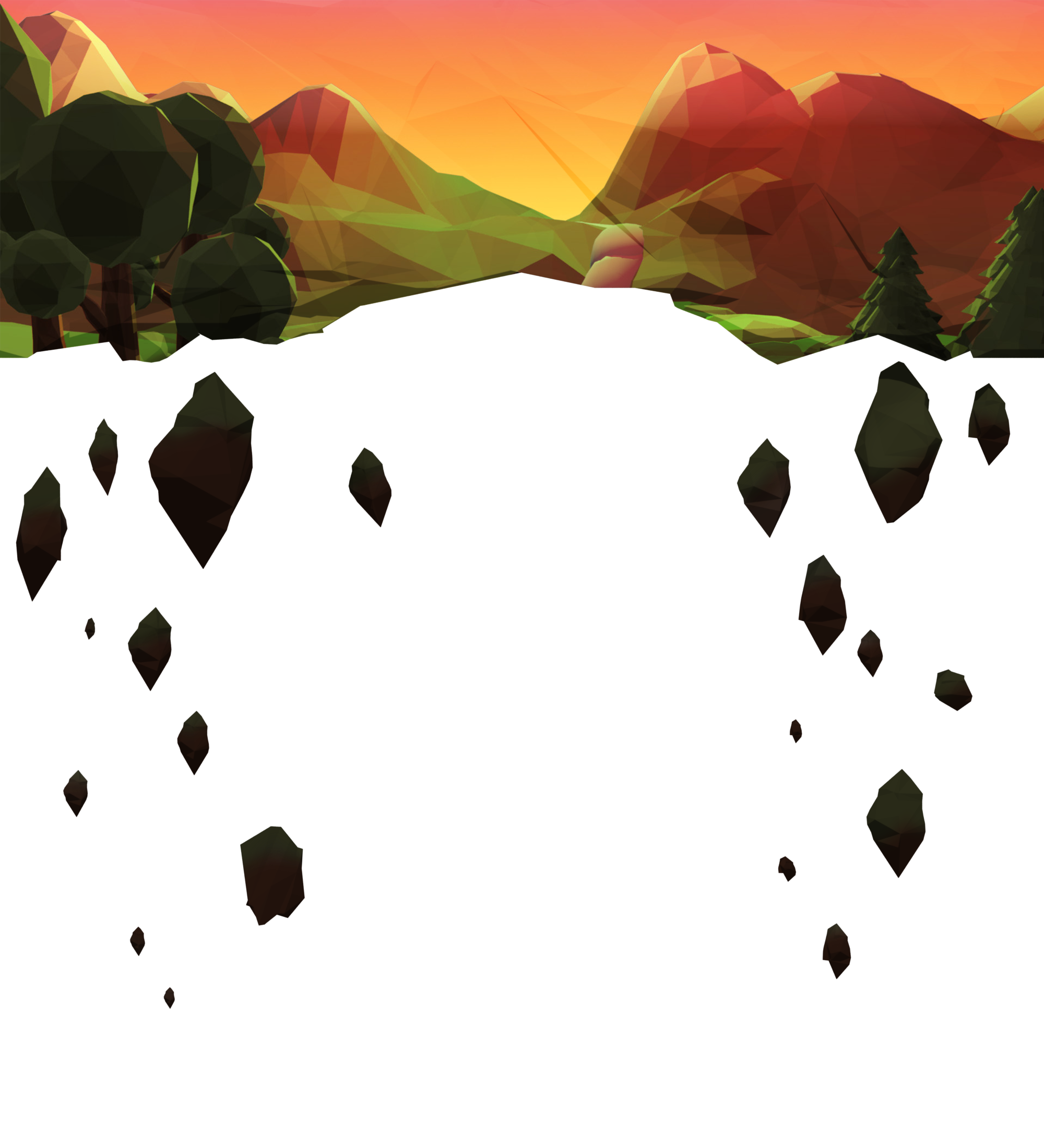An Animated Film of Four Hunters
About Polygone
Brief
Polygone is the outcome for our final group project in our animation class at Simon Fraser University (SFU). The task was to create and show a narrative through animations using mainly Autodesk Maya 2016 for 3D modelling.
Concept
The concept of Polygone is about four hunters who journeys across several locations to find the polygone gem. Once the hunters opens the gate to the temple that holds the gem, the audience is left with a cliffhanger. This concept was chosen because it was a short enough for feasibility, but contains enough content that showcases our newly learned 3D modelling and animating abilities. As an added note, having to create several environment scenes was quite fun for me.
Challenges
We encouraged ourselves to create our own models, environments, and animations. This means we did not want to download ready-made 3D model assets from other creators. Our biggest challenge was to be able to create a polt, animate and create every single model in our animation, animate the necessary scenes, and render (which takes quite a long time) in a short amount of time. We wanted to show the abilities we learned from lecture, studio time, and online tutorial, to create an animation without using shortcuts.
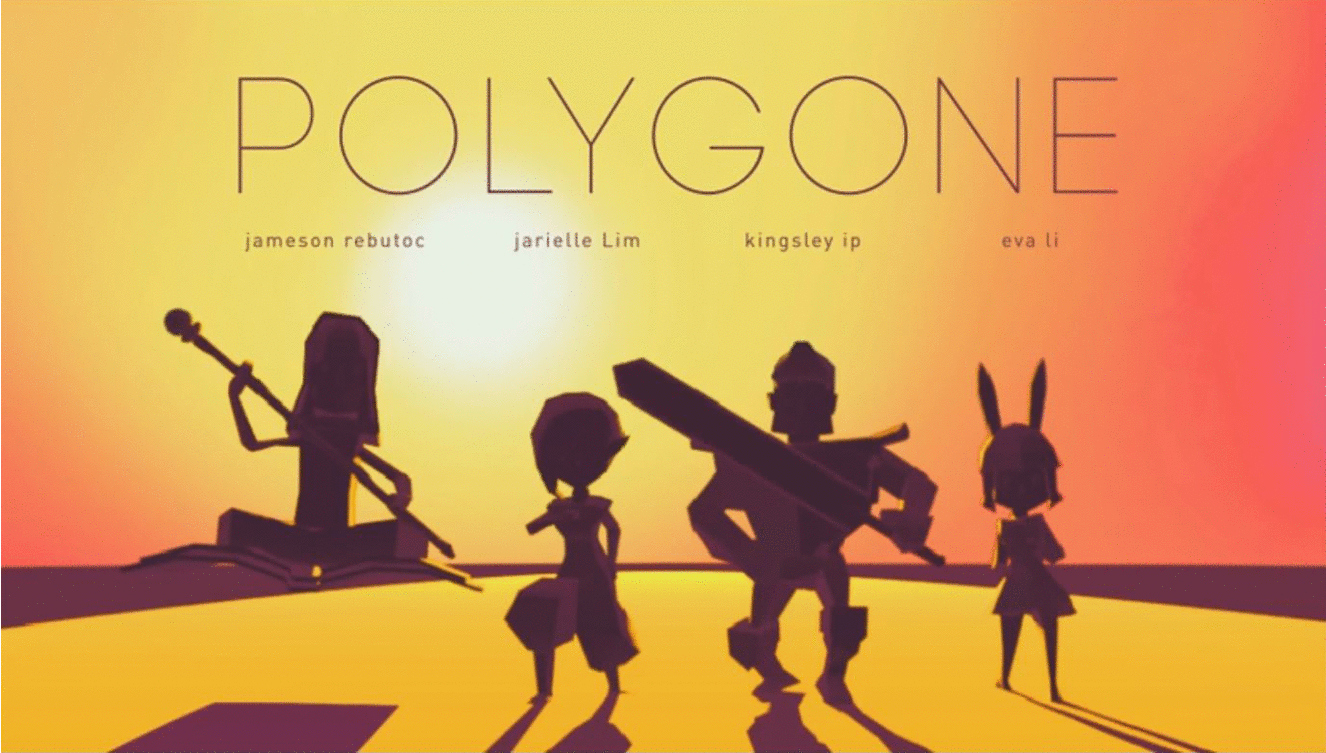
The content below is the process and my contribution to Polygone. The final video is also shown after the process, but if you would like to watch the final video now, click here.
My Role
- Lead 3D Environmental Modelling and Lighting
Software Used
- Autodesk 2016 Maya
- Adobe Photoshop
Process
Discovery
During our studio lab sessions, one of our tutorials consisted of teaching how to create 3D compositions with a low-poly aesthetic. Our teaching assistant introduced a 3D modeler artist named Timothy J. Reynolds and I immediately realized here that I loved this form of aesthetic and was motivated to practice more of this art-style in my free time.
Practice
Because I was highly inexperienced in using Maya and this art form, I practiced outside of school hours. I created various crude forms of low-poly art style. I watched YouTube tutorial videos, kept links of various “how to’s” for future references. In-between my other school projects and assignments, I made time to practice; simply because I had fun creating them. I enjoyed the struggle of figuring out the technical skills in Maya and the reward of finally seeing the final render in Photoshop.
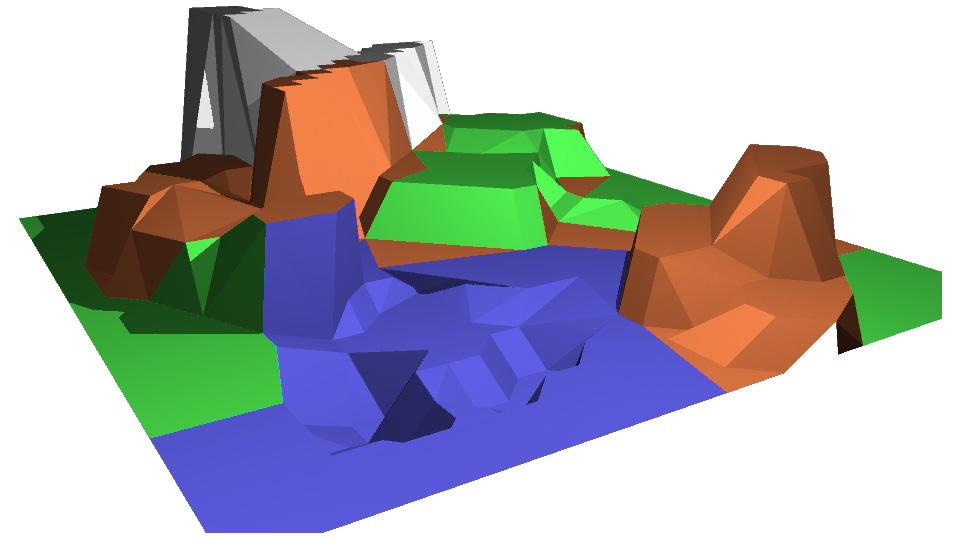
Creating a low-poly environment initially consists of three layers created in Maya: colour layer, occlusion layer, light layer. Then I combined the three layers by multiplying the layers, enhancing/adjusting it in Photoshop, in which is finalized into a low-poly composition.
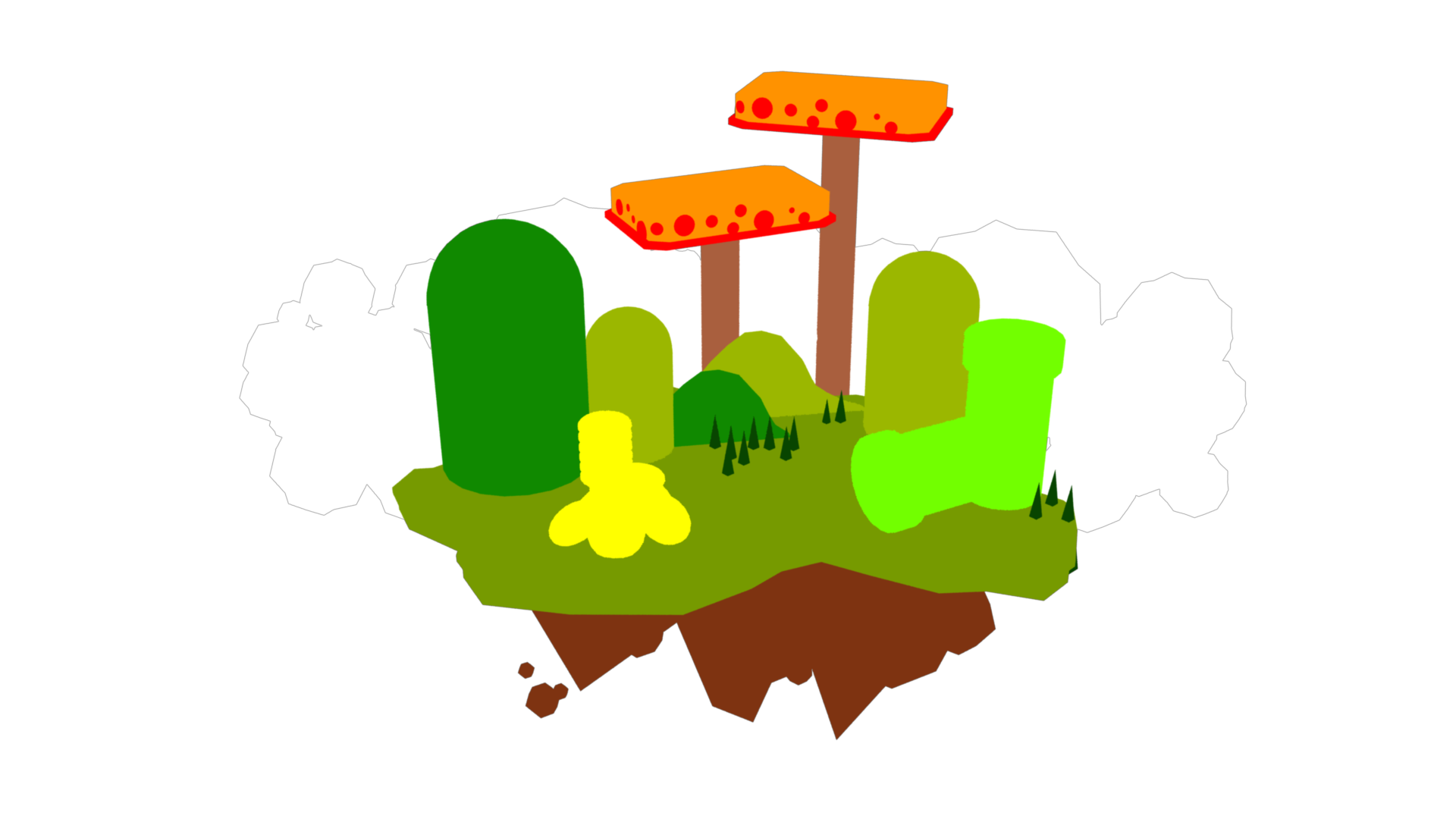
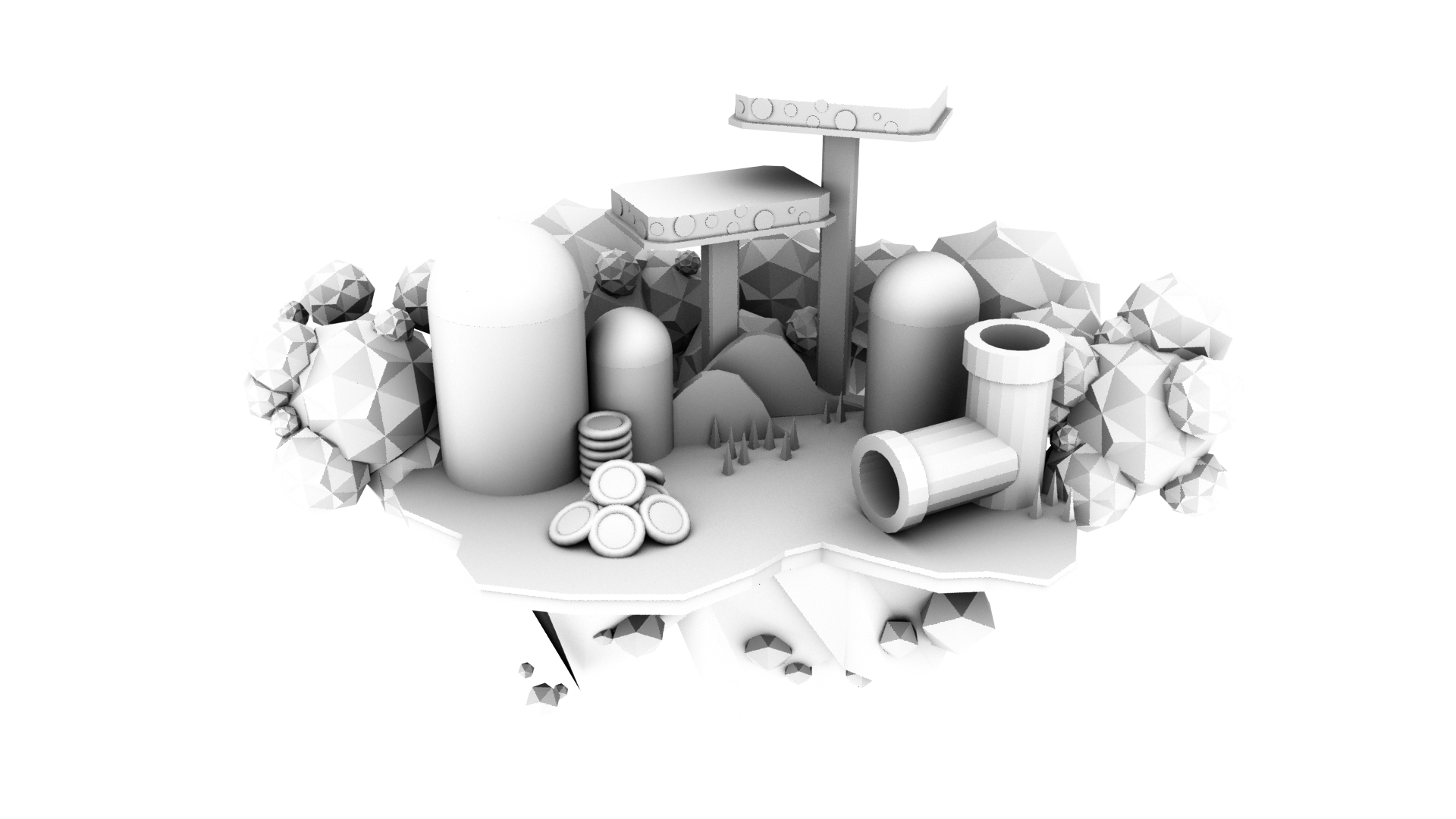
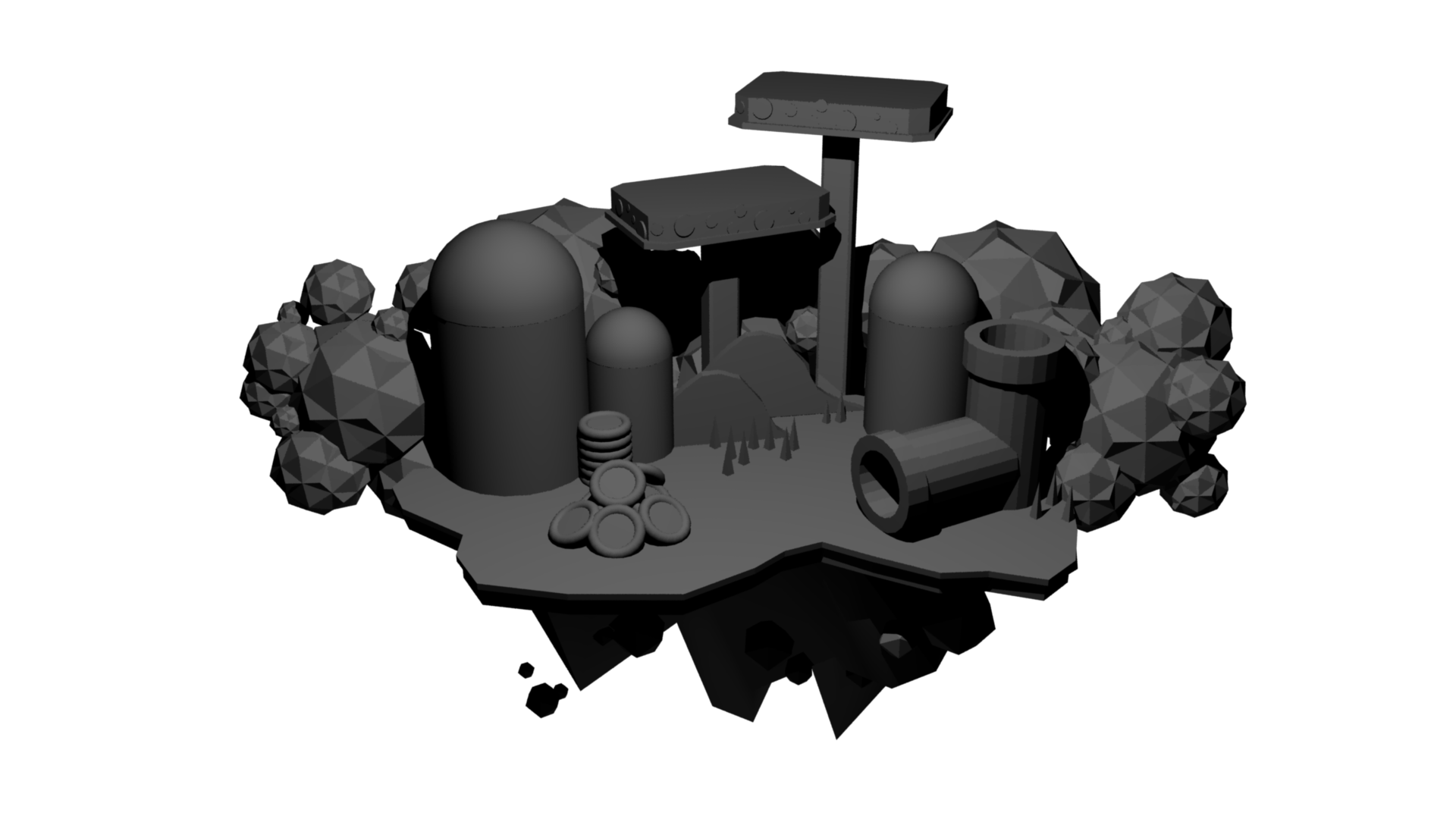
The way I practice is by re-creating existing art. When I was confident with my newly learned Maya skills, I tried to recreate one of Timothy’s artwork, called “Island”.
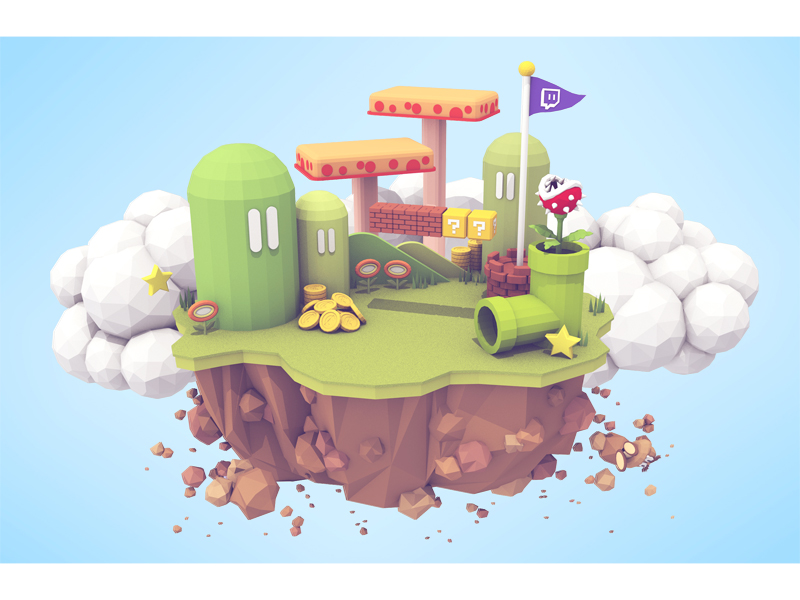
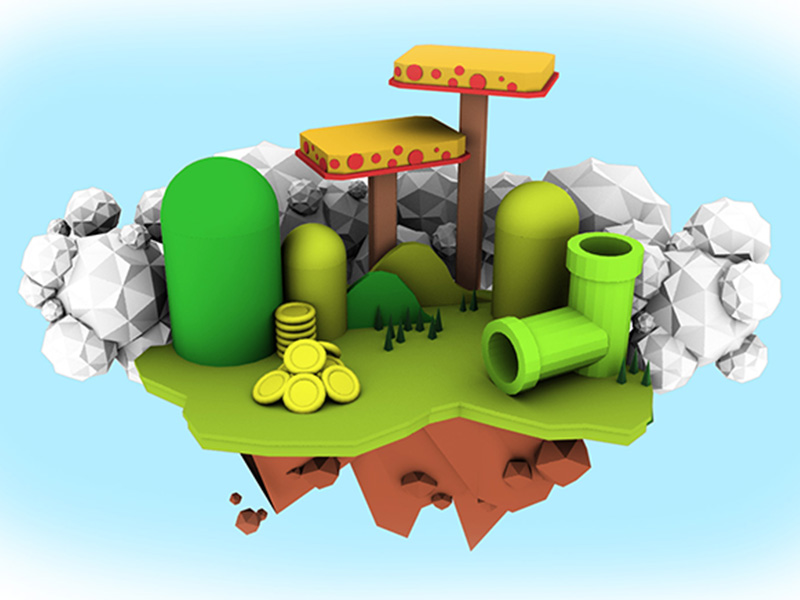
Step 1: Storyboarding Video
When it was time to work on Polygone, we initially began with conceptualizing and storyboarding. We decided to go for an “adventure” and “fantasy” type of short film where four characters goes through a montage of various environments to retrieve a legendary gem called “Polygem”, that resides in a temple of floating islands.
Because we wanted to create all of our assets, our major struggle as a group was creating a complete animation within a short time frame (approximately 2 months), on top of other projects, with beginner to no skills in Maya or animations in general. Therefore, we settled with a low-poly art style for a “quicker” way to create the models, while also embracing our mutual favour of low-poly aesthetic.
Step 2: Animatic Video
The animatic is a low-fidelity version preceding to the production of the final animation. Because my role was the 3D environment modeller and lighter, I had to practice creating environments for the montage of our final animation. For the animatic, my task was to create the environment for the lava land, floating islands, and the temple scenes.
Using Jarielle Lim’s sketches from our storyboard, I created these compositions for my assigned environments.
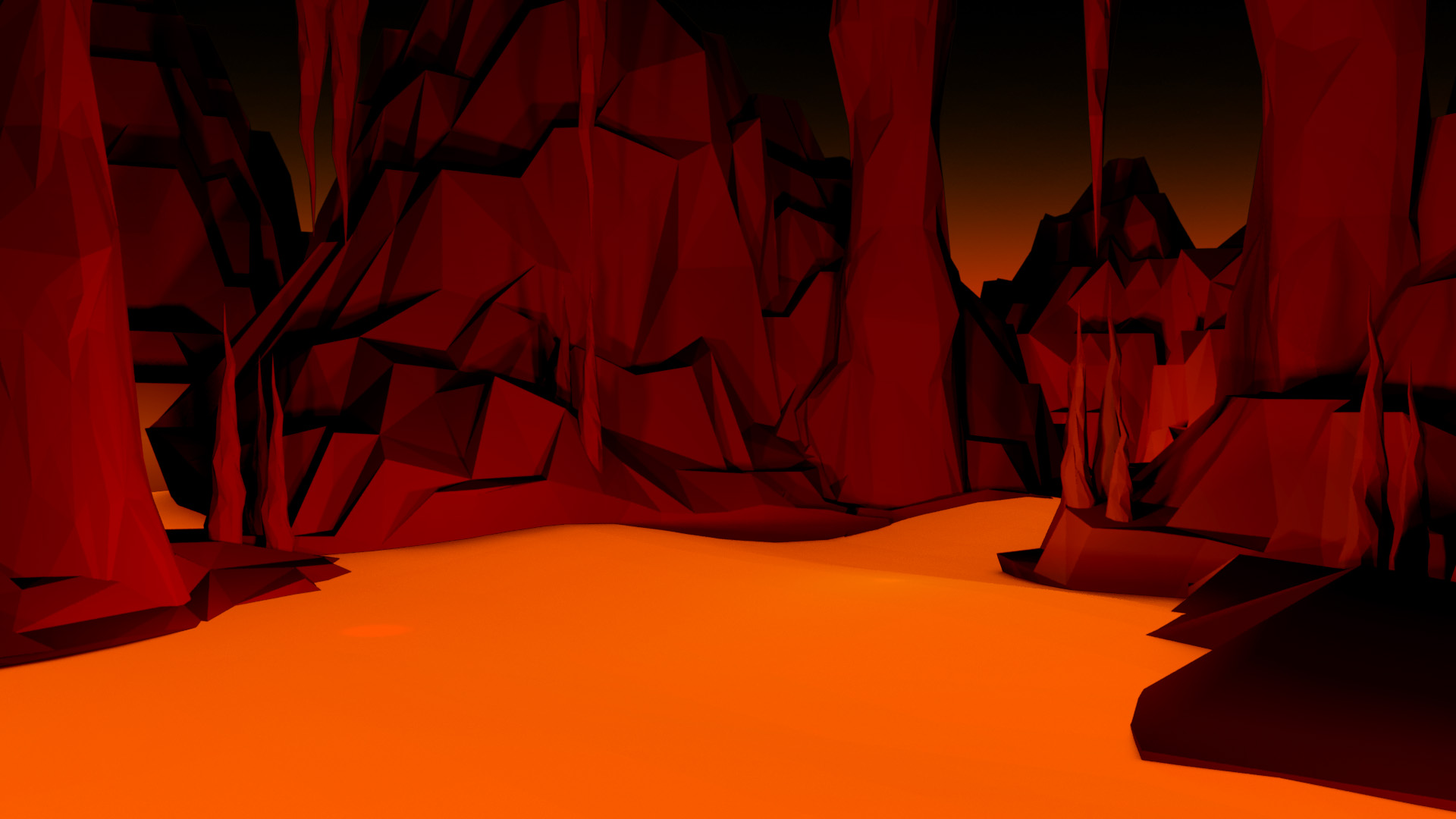
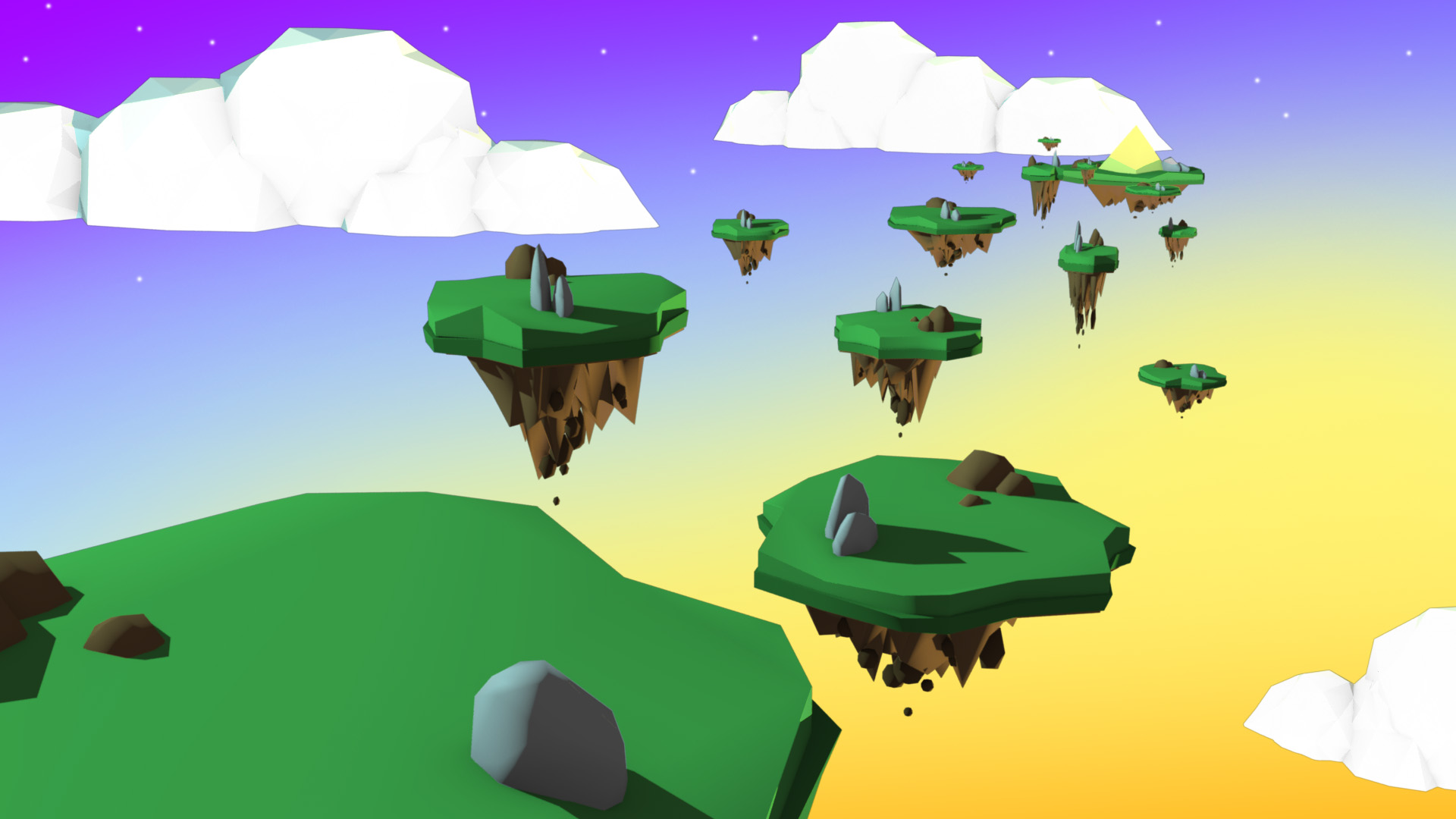
For the animatic, you may have noticed that the quality is lower and grainy. This was the consequence of time pressure. Rendering separate frames for each “animated” scene of the animatic took too long and lowering the quality quickened the process.
Step 3: Final Animation
My task for the final portion of Polygone was to recreate and replace the animatic forest scene, create a new temple, fix any small details such as lighting, while also animating some scenes. However, much of my animation was improved by my teammates because I was too focused on modelling.
To keep the art-style consistent, I re-created the forest scene that was previously made by one of my teammate for the animatic video above, which ended up in the final rendition of the Polygone film.
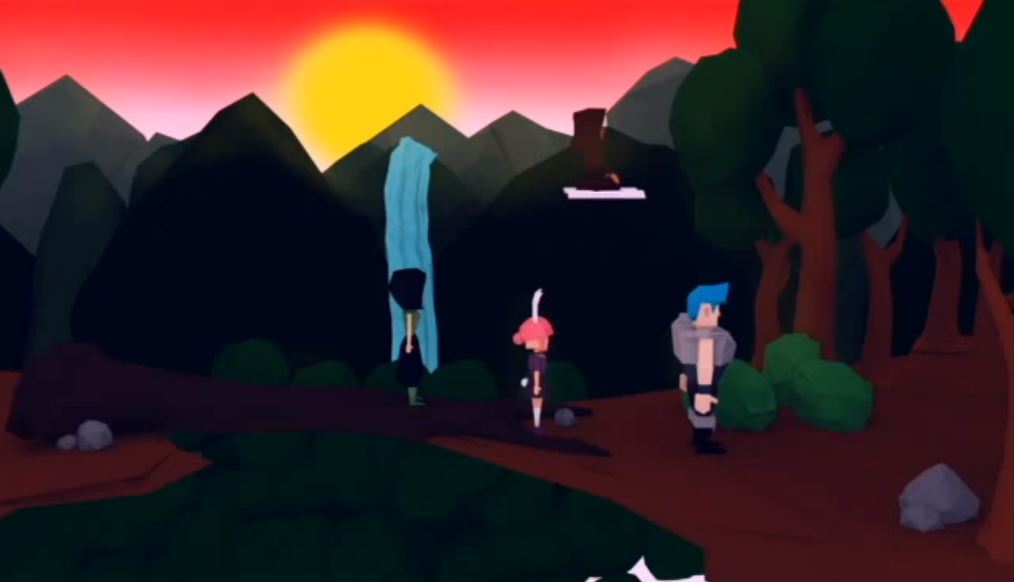
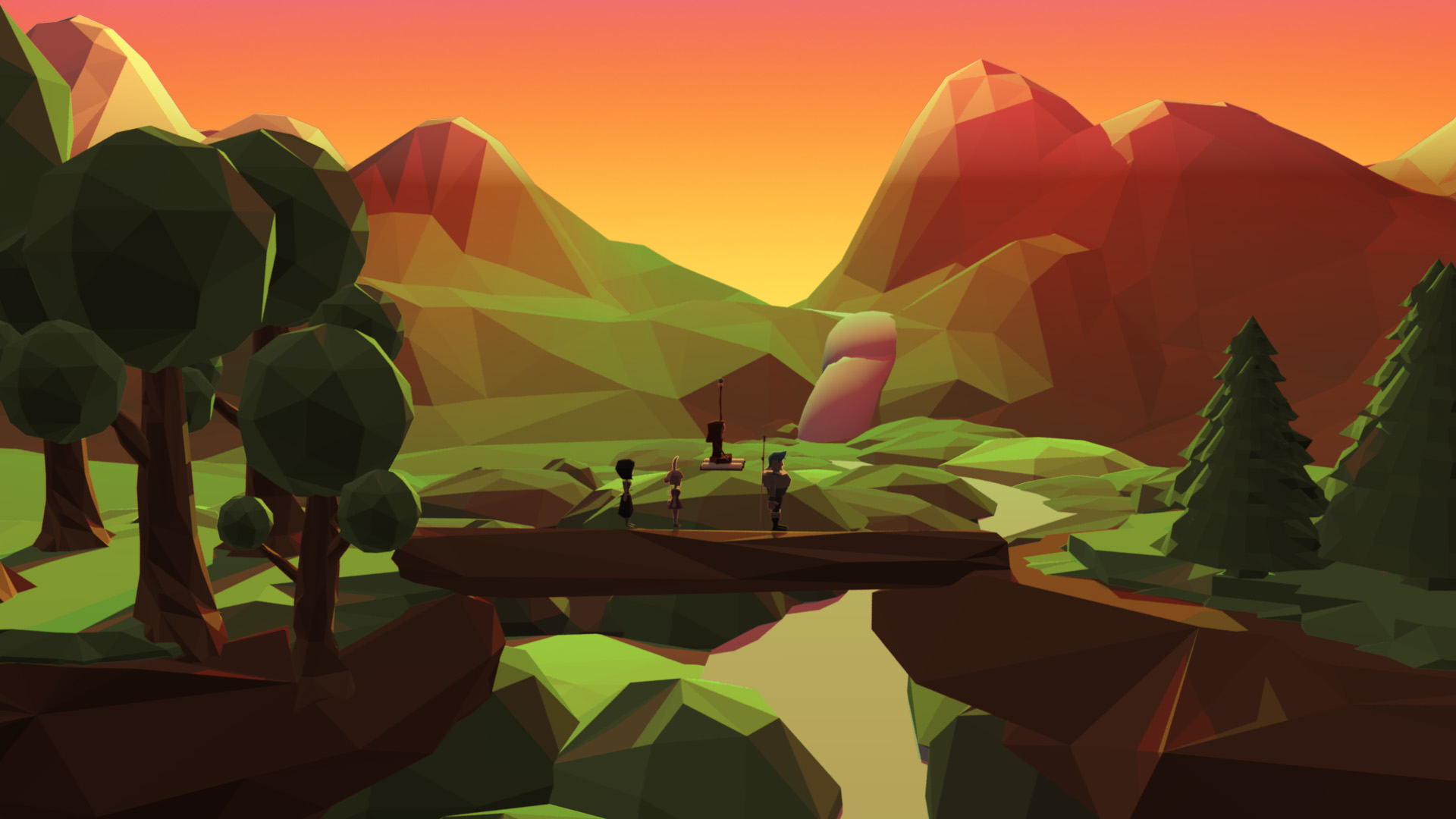
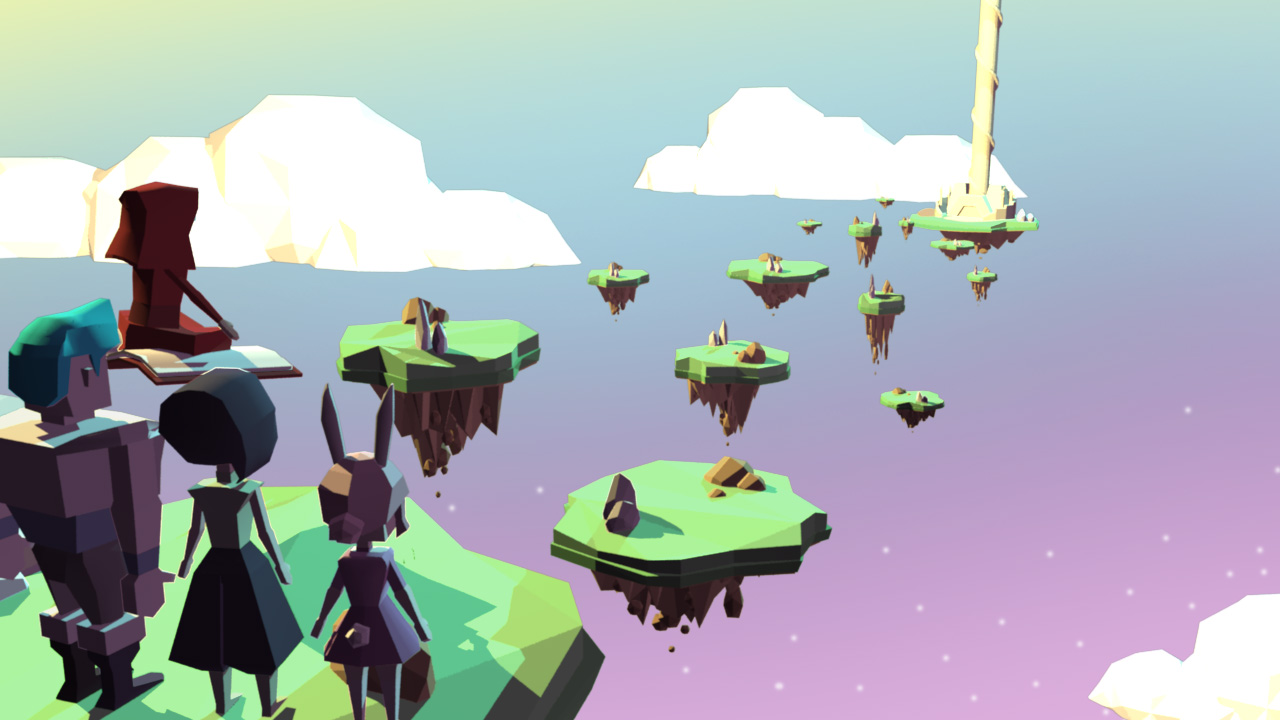
For the final animation, there was even less time to finish the final product. To adapt to the situation, I had to sacrifice one layer from the low-poly art style (removing the occlusion layer). Much like creating a single composition in Photoshop, creating the same art-style requires us to render the scene three times (in colour, occlusion and light layer). Then we combine all scenes is a video-editing software and layer them on-top of each other much like how I combine them in Photoshop. The light layer consisted enough shadows to act as a crude (hopefully not noticeable) replacement for the occlusion layer.
Furthermore, in this work pipeline, our team was divided between modelling, animating and post-production. While I created the environmental models, my other teammates were animating, and rendering. This multi-tasking process was very effective in working around the giant chunk of time wasted, waiting for each frame to render in Maya.
Final Remarks
Polygone was quite a success in terms of as an amateur animation film. Our mentor adored the "beauty" of the various environments in the animation. He liked the idea of a simple narrative that consisted multiple scenes that shows what we know about modelling in Maya and just enough animation that showcased what we learned in the course without making the narrative seem awkwardly cut due to time issues.
Taking this animation course was a great way to introduce me to the animation pipeline. I learned the basic steps of creating an animation, from concept, to storyboard, animatic, post-production and final animation. I also experienced the stress of meeting deadlines, particularly in animation. Because rendering is such a long process (depending on the amount of detail in the scene, quality, power of your machine), we have to workaround this length of time of rendering by multitasking, and lowering the quality of the of the product (in a non-distracting way).
What I found really important at this stage of my life, is that I realized how much I really like creating 3D models! Although I’m still trying to learn, I like creating digital art, and the reward of watching it render to life. In the future, I hope to create higher-fidelity models that are less abstract than just low-poly artwork.
